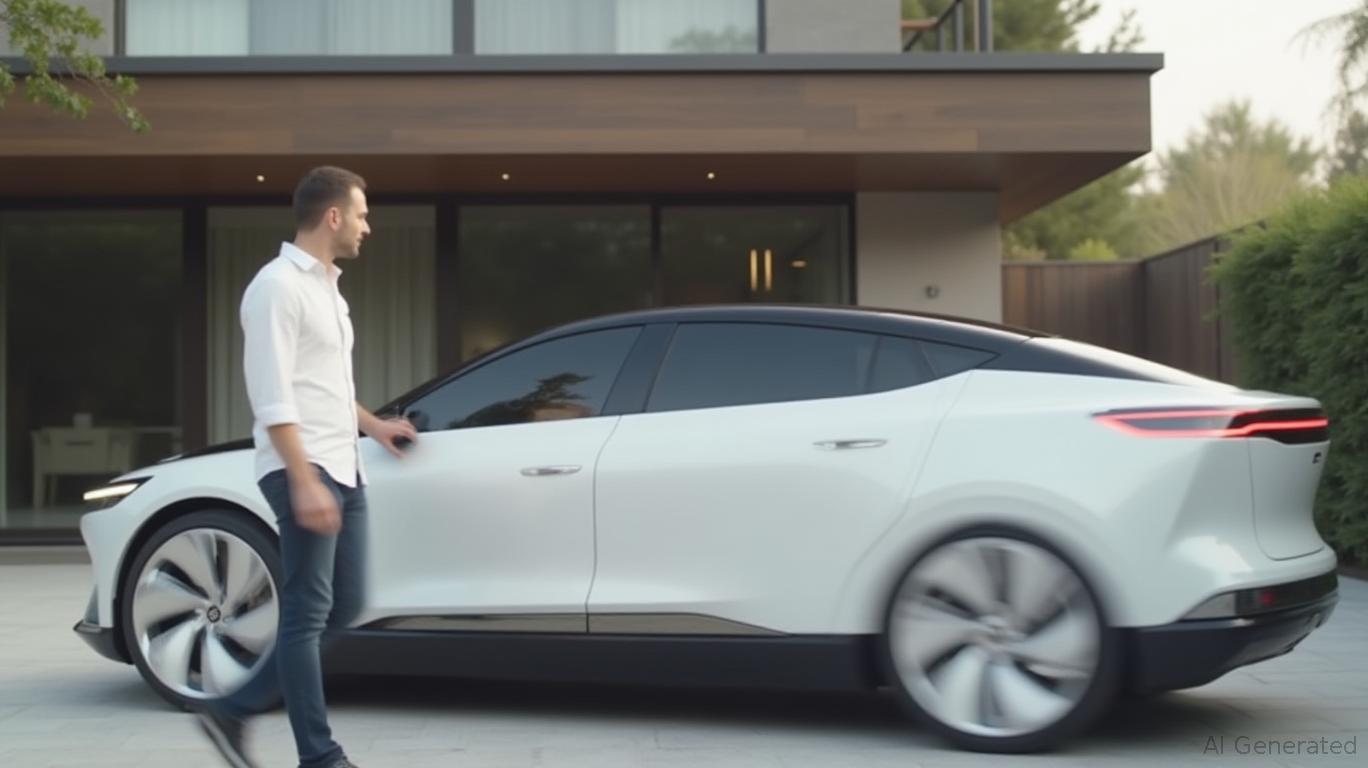Faraday Future's AI-MPV Gambit: Disruptor or Speculative Play?
The June 29, 2025, launch of Faraday Future's (FF) FX Super One marks a pivotal moment for the beleaguered EV startup. Positioning itself as the first “First Class AI-MPV” for the U.S. market, FF's co-creation strategy—a mix of unconventional partnerships, AI-driven features, and cost-cutting production—aims to redefine mobility. But with a history of missed deadlines and financial instability, investors must ask: Is this a credible disruption of the EV market, or another speculative bet on a company with a shaky track record?
The Co-Creation Play: A Bold, Risky Model
FF's co-creation approach skips traditional dealerships in favor of partnerships with non-traditional players like real estate brokerage Pinnacle Group and livestream MCN Telling Inc. These alliances are central to FF's “Scenario-as-Store” vision:
- Pinnacle Group secured a non-refundable deposit for 1,000 units, leveraging its 2,000 real estate agents to expose high-net-worth buyers to the FX Super One during open houses. This integration aims to slash customer acquisition costs by 30–40% compared to Tesla's store-heavy model.
- Telling Inc.'s 500 pre-orders via TikTok influencers target Gen Z buyers, blending social media virality with EV sales—a tactic

This model reduces upfront capital for FF but hinges on partnerships' success. If these alliances fail to scale, the co-creation strategy could backfire, leaving FF without a reliable sales channel.
Execution Risks: Permits, Cash, and Competitors
SEC filings reveal FF's vulnerabilities:
1. Permit and Regulatory Hurdles: The Hanford, CA, factory's reconfiguration for 30,000+ annual units requires permits still pending. Delays here could push production beyond 2025, risking investor confidence.
2. Cash Flow Crunch: Despite $250 million in cash, FF's burn rate exceeds $30 million/month pre-production. Even with $41 million in pending funding, liquidity risks loom if pre-orders don't meet targets.
3. Competitor Momentum: Tesla and Lucid dominate luxury EVs, while GM's HUMMER EV and Ford's F-150 Lightning target mass markets. FF's AI-MPV niche faces skepticism—will buyers pay a premium for “contextual learning” features over Tesla's Autopilot?
Market Potential: AI-MPVs—Blue Ocean or Niche Niche?
FF bets that AI-integrated MPVs will carve a “blue ocean” in the EV market. The FX Super One's FF AI 2.0 system—with real-time language switching and ambient cabin controls—targets families and professionals seeking a “mobile living space.” However:
- Demand Uncertainty: MPV sales remain niche in the U.S., dominated by Toyota's RAV4 and Honda's Odyssey. FF's $20k–$50k pricing must compete with established names without proven demand for AI-centric features.
- Scalability: The AIHER subsidiary's push into EVTOL and commercial trucks expands FF's vision but adds complexity. Can a company struggling with car production master airborne mobility?
Investment Thesis: High Risk, High Reward
FF's June 29 launch and July 17 global event are make-or-break moments. If:
- Pre-orders exceed 10,000, signaling strong demand for its co-creation model.
- Hanford permits are secured, enabling production by year-end.
- AIHER partnerships attract investors for EVTOL ventures, diversifying revenue streams.
FF could reach $5–$7 per share (up from $2.50 in June 2025), mirroring Lucid's valuation. However, failure to clear these hurdles risks a plunge to $1.50 or lower, reflecting liquidity strains and operational missteps.
Final Verdict: A Gamble for Aggressive Investors
Faraday Future's pivot to AI-MPVs is bold—a mix of visionary tech and pragmatic cost-cutting. Yet its execution risks are existential. Speculative investors with high risk tolerance might allocate a small position ahead of the July launch, but caution is warranted. The next 60 days will reveal whether FF can transform its vision into reality—or face another chapter of underdelivery. For now, the FX Super One remains a high-stakes bet on a company's ability to defy its past.

Comments
No comments yet